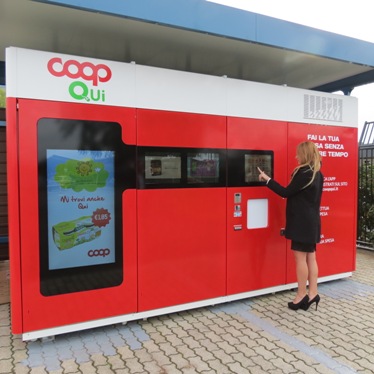Franchising, retail, business

15/09/2015
The connected customer is driving a revolution in retail, in Italy too. A recent report by Coop about Consumptions and Distribution in Italy confirms that the growth and adoption of digital and mobile technologies has caused a fundamental shift in the way consumers shop and interact with retailers of all sizes and types, in all locations.
The customer journey has become infinitely more complex to measure, predict and understand, while shoppers’ expectations have never been more challenging to meet.
This shift in the power balance towards the consumer will accelerate as more powerful devices and better connectivity converge. By 2020, it is estimated that 50 billion to 100 billion devices will be connected to the Internet. A new breed of customer has already emerged; they are technologically well-informed and demanding, and are having interactive experiences across various channels.
According to last report by Audiweb.it, August 2015, mobile and online services are transforming the shopping experience. The connected customer expects to be able to buy anytime and anywhere, often fusing the offline and online worlds as they research and make purchases. This is creating new opportunities for retailers, but increased choice, information and convenience also boosts competition. In a rapidly changing landscape, how can retailers capture and increase sales, and retain or ideally enhance profitability, and how does this impact upon the development of their multi-channel strategies?
In the current retail scenario, WIB proposes its innovative retail solution, representing the missing link between a traditional shopping experience from stores and purchases from e-commerce.
A concrete case is CoopQui, the fully automated shop in Catania provided by WIB for Coop Sicilia.
WIB offers an innovative, efficient, low-cost, omni-channel system that enables Coop Sicilia to improve the purchase experience of end consumers with a new service. At the same time, WIB helps Coop to enhance its brand awareness, by opening a strategic point of purchase in an isolated industrial area, where there are no grocery services for daily shopping in the neighborhood.
It is a unique case in Italy: more than 5000 employees in that area today can buy directly from the automated shop Coop Qui on site, remotely from the web platform www.coopqui.it , or from the CoopQui App available with free download for iOS and Android mobile devices. The catalogue offers about 100 different products, including fresh food and beverages, personal hygiene products and homecare items. Thanks to WIB’s patented multiple picking technology, people can put an entire shopping list in their virtual cart and then collect it in just one delivery operation, 24H7.
The automated shop CoopQui is practically always open and it is able to cover specific needs in a simple and convenient way by responding to:
- contingent needs for immediate consumption, such as impulse buying on the spot, a snack on a break during the night shift, etc.
- emergency needs related to the consumption of the whole sphere of family life, like when basic products suddenly run out.
- the need to optimize time dedicated to shopping in a couple of clicks, and then collect the purchases in a minute, without deviating from the route back home, risking queues and wasting time.
- the need to delegate the purchase, in a convenient way, where a spouse can remotely plan the shopping list, carefully choosing the products, and can delegate the withdrawal to another, without bearing the burden of managing the entire selection of purchases.
The initial user response to the innovative CoopQui channel provided by WIB has been positive, both in terms of multi-channel options (on site, from the web, or from their mobile advices) and in terms of payment.
In fact, in 9 months of use, employees have shown a preference for the online channel, from which the automated shop CoopQui has received 70% of its orders, while only 30% of purchases have been carried out on site. In addition, the online purchases, in terms of sales, far outweigh shopping on site, generating about 85% of total sales.
The value of the average receipts for online orders exceeds by about 60% the ones generated directly from automated shopping on site.
To conclude this first overview, among the payment methods which are available, people have shown a clear tendency to prefer electronic payments – PayPal and credit cards– making up 88% of transactions rather than payments in cash.